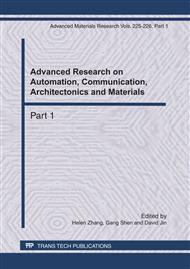p.1188
p.1192
p.1196
p.1200
p.1204
p.1208
p.1212
p.1218
p.1225
Exploring the Application of Voice Interactive Technology in Distance Language Teaching
Abstract:
Rapid development of communication technologies has brought revolutionary changes to language teaching and learning. The use of computer technology has become an integral aspect of language learning. A diverse array of technologies, such as online learning platform, CD-ROMs, Multimedia Network Courseware, write site and videoconferencing etc. have been used to enhance distance language teaching, but they don’t provide opportunities for oral output since most of the communication tools are text-based. This poses great impediment to language learning, so, this research strongly recommends that voice interactive technology, such as Wimba Voice, should be applied to distance language teaching especially in Radio & TV Universities—China’s largest provider of open and distance education.
Info:
Periodical:
Pages:
1204-1207
Citation:
Online since:
April 2011
Authors:
Price:
Сopyright:
© 2011 Trans Tech Publications Ltd. All Rights Reserved
Share:
Citation:


